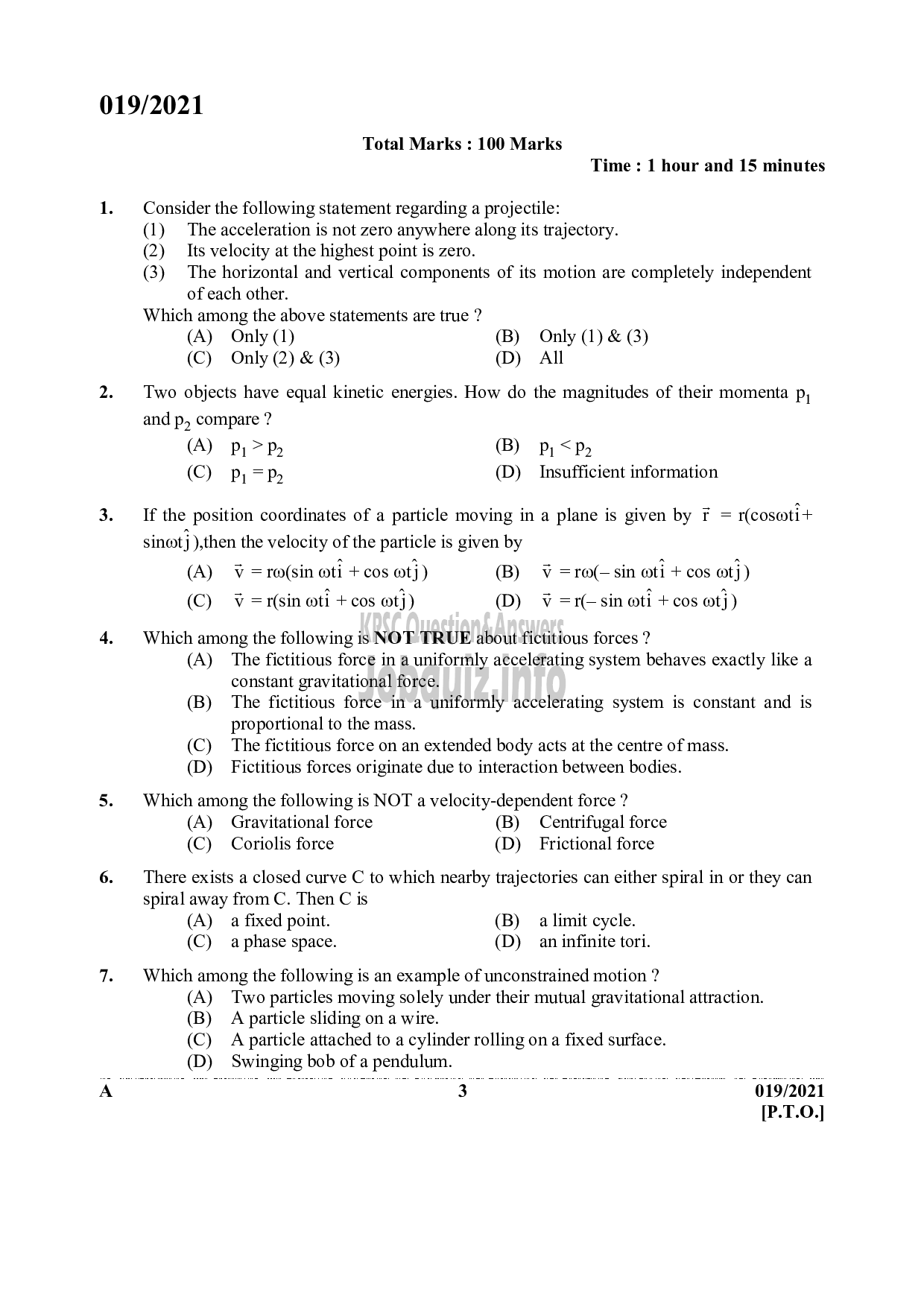Kerala PSC Previous Years Question Paper & Answer
Page:3
Below are the scanned copy of Kerala Public Service Commission (KPSC) Question Paper with answer keys of Exam Name 'SCIENTIFIC OFFICER (PHYSICS) -KERALA POLICE SERVICE (FORENSIC SCIENCE LABORATORY)' And exam conducted in the year 2021. And Question paper code was '019/2021'. Medium of question paper was in Malayalam or English . Booklet Alphacode was 'A'. Answer keys are given at the bottom, but we suggest you to try answering the questions yourself and compare the key along wih to check your performance. Because we would like you to do and practice by yourself.
019/2021
Total Marks : 100 Marks
Time : 1 hour and 15 minutes
1. Consider the following statement regarding a projectile:
(1) The acceleration is not zero anywhere along its trajectory.
(2) _ Its velocity at the highest point is zero.
(3) The horizontal and vertical components of its motion are completely independent
of each other.
Which among the above statements are true ?
(^) Only (1) (B) Only (1) & (3)
(C) Only (2) & (3) (D) All
2. 180 objects have equal kinetic energies. How do the magnitudes of their momenta رم
and p, compare ?
(A) وم> رم )8( وم < رم
(९) 921 وم (D) Insufficient information
3. 12 the position coordinates of a particle moving in a plane is given by ۴ = (005614
sina] ),then the velocity of the particle is given by
(A)
(0)
4. Which among the following is NOT TRUE about fictitious forces ?
(A) The fictitious force in a uniformly accelerating system behaves exactly like a
constant gravitational force.
(B) The fictitious force in a uniformly accelerating system is constant and is
proportional to the mass.
(6) The fictitious force on an extended body acts at the centre of mass.
(D) Fictitious forces originate due to interaction between bodies.
=re(sin oti + cos 58 ) 6) = 100(- 1 कौं + cos اہ )
0 ம்
۳ =1(sin छा + cos otj) (2) स (श oti +cos ಐಟಿ)
5. Which among the following is NOT a velocity-dependent force ?
(4) Gravitational force ൯) Centrifugal force
(C) Coriolis force (D) Frictional force
6. There exists a closed curve C to which nearby trajectories can either spiral in or they can
spiral away from C. Then C is
(A) ३ fixed point. (B) 8 limit cycle.
(C) 801856 space. (D) an infinite tori.
7. | Which among the following is an example of unconstrained motion ?
(A) Two particles moving solely under their mutual gravitational attraction.
(B) A particle sliding on a wire.
(C) A particle attached to a cylinder rolling on a fixed surface.
(D) Swinging bob of a pendulum.
A 3 019/2021
[.7.0.]
